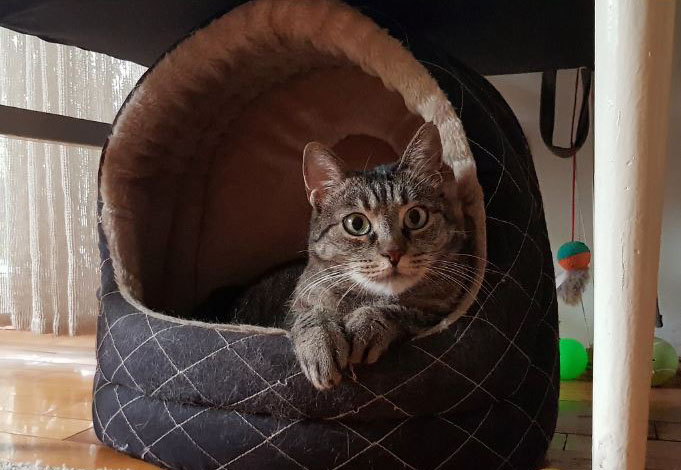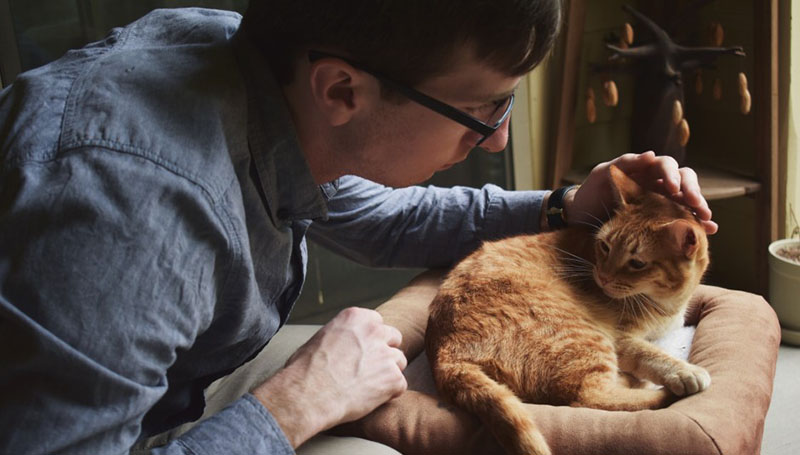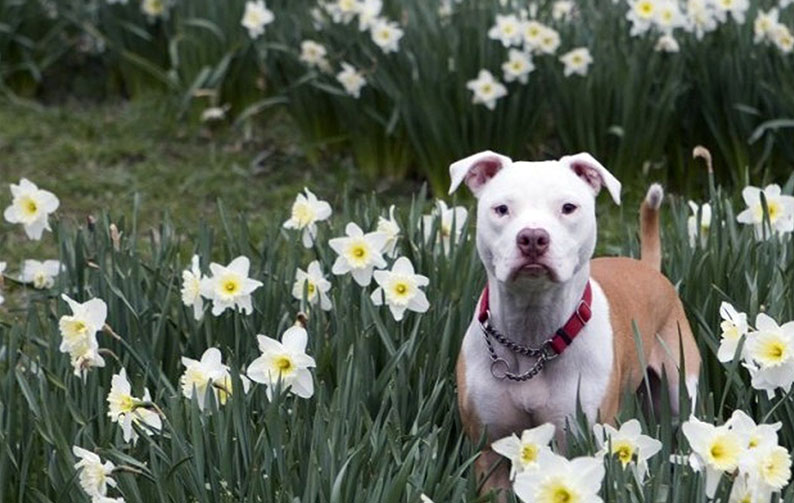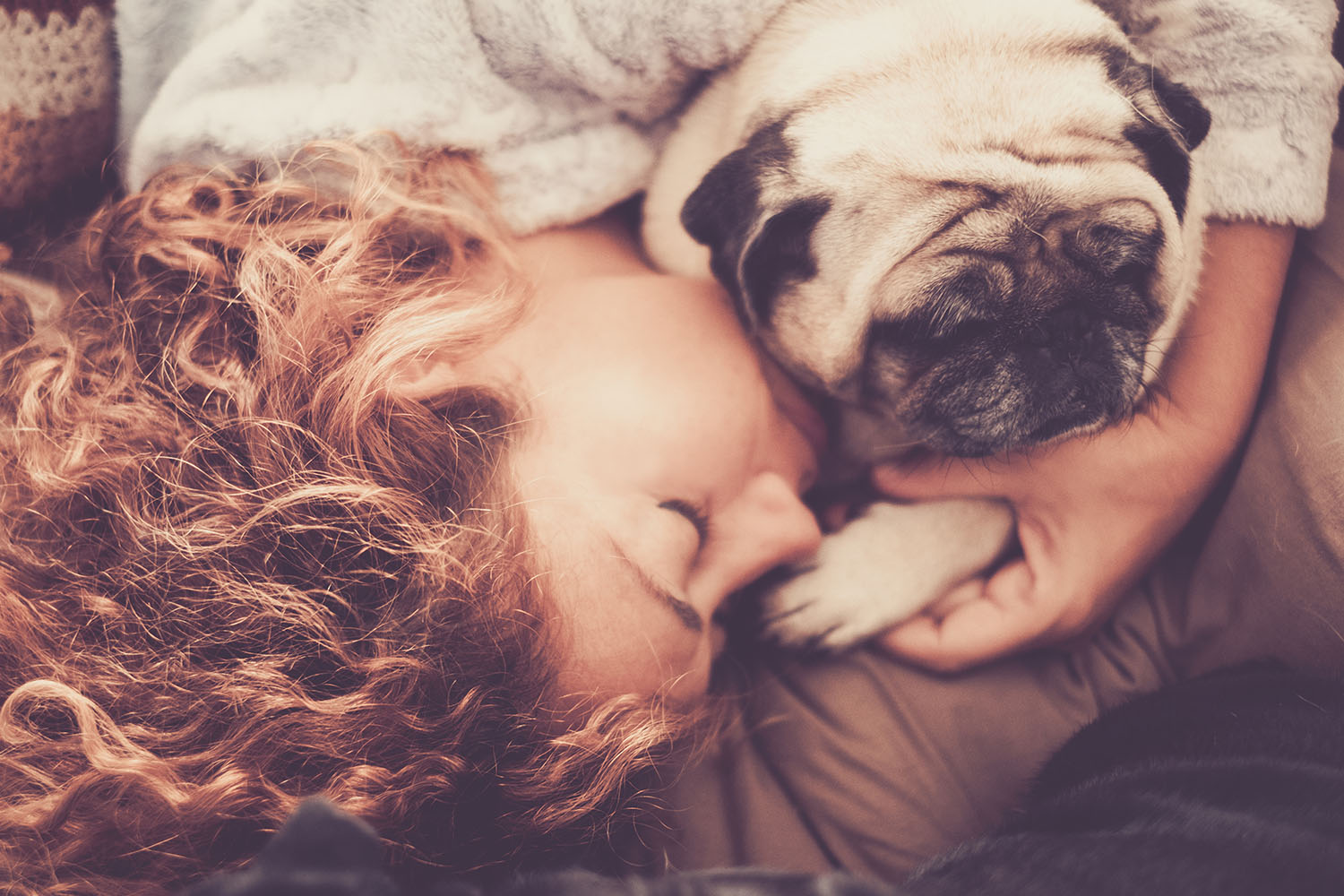In-Home Pet Euthanasia helps families ease the passing of their pet in a familiar and comfortable environment.
Navigating your pet’s final chapter is never easy, and it’s natural to have questions about your pet’s end of life experience. We’re here to help by answering the most frequently asked questions about the entire in-home euthanasia process.
When & How: What’s Best for My Pet?
How do I know when it’s time to euthanize my pet?
Deciding “it’s time” is the hardest choice you’ll have to make as a pet parent. While there’s not an easy answer, we find the best decision-making tool is a quality of life assessment. Ask yourself questions like:
“Is my pet having more good days than bad?”
“Is my pet still enjoying life?”
“Is my pet in pain?”

Here’s our guide to understanding your pet’s pain and how it relates to their quality of life. With these tools, you can create your own assessment of your pet’s quality of life – one that is 100 percent unique to them.
What are the benefits of in-home euthanasia?
In-home euthanasia allows your pet to pass peacefully in the environment where they feel most loved and comfortable – your home. You’re spared the experience of driving your pet to the vet and saying “goodbye” in an environment that may be stressful or unfamiliar. Electing in-home euthanasia allows you to focus solely on your pet and offers a low-stress, peaceful transition.
How do I choose between natural death and euthanasia?
During your pet’s final chapter, it’s normal to consider allowing your pet to pass on their own instead of electing euthanasia. Answering this question is also a matter of considering your pet’s quality of life in their final moments.
While this decision may come with complex emotions, euthanasia ensures your pet’s experience is as gentle and peaceful as possible, as the process is designed to promote a tranquil and comfortable passing.
When it comes to a pet passing naturally, the reality is: most pets don’t pass peacefully “in their sleep.” The experience to both pet and family can be distressing in certain instances, and because of this, many pet owners choose euthanasia to help their pets die peacefully. Euthanasia can be looked at not as shortening a pet’s life but shortening a pet’s death.
The In-Home Euthanasia Experience
How do I prepare for in-home euthanasia?
The only thing you need to do to prepare is focus on your pet and give them lots of love. We care for all the details, including:
- Providing soft blankets and “potty pads”
- Arranging transportation and cremation, if elected
- Notifying your primary veterinarian, so you don’t need to make that difficult call

You do not need to provide any additional items or preparation materials.
Will I have the opportunity to ask questions during the appointment?
We understand this is an emotional time, and one that cannot be rushed. Before the euthanasia process begins, you will have all the time needed to ask questions or discuss your decision with the veterinarian.
What can I expect to happen medically during the euthanasia process?
Families appreciate that we don’t do anything clinical that would interrupt the intimate moment they are experiencing, such as shaving fur, placing an IV catheter, or taking their pet out of their arms. Once your pet is in a comfortable position, the veterinarian will administer a fast-acting sedative, which will gently relax them into a state of unconsciousness where they cannot feel any pain or anxiety. You’ll notice your pet will begin to relax as the sedative reaches its full effect, generally within 5 minutes. Once your pet is fully asleep, the veterinarian will administer the euthanasia medication.
For most pets this injection is administered into the liver, which allows for a gentler and more peaceful passing over the course of 5-10 minutes. Alternatively, an injection into a vein can be given, where death will occur in a matter of seconds. At BluePearl Pet Hospice, we prefer to give the final injection within the liver whenever possible. And unlike an IV injection, where death can feel very abrupt, an organ injection allows families to say their final goodbyes over several minutes instead of seconds.
What can I expect after my pet passes away?
Sometimes, it’s common for pets to urinate or defecate, take a final breath, twitch, or keep their eyes partially open. These are all normal and your pet will not be in pain or have awareness these functions are happening. Finally, the veterinarian will check your pet’s vital signs to confirm their death.
Where should euthanasia take place?
The in-home euthanasia process can essentially take place anywhere in your home where you and your pet are comfortable. This may be a sunny spot by the window, a cozy part of your living room, or anywhere else where they feel relaxed.
Should children be present for euthanasia?
Children should ideally have the opportunity to say goodbye to their companion, whether it be before or during the euthanasia process. In our experience, children over five years old are amazingly present and engaged and understand what’s going on. However, children under the age of five may be unsure of what’s going on and may become upset by their parents’ emotions during this difficult time.
Of course, this decision is ultimately the choice of the parent. You can choose to have your child in the room, in a different room within the home, or absent during the process. Whatever choice you make, keep in mind that open communication will be key to managing your child’s experience.
Should other pets be present for euthanasia?
In our experience, we find other household pets absolutely need this time to say goodbye, just like any family member.
Most pets seem to understand what is going on, and will sit quietly and attentively, honoring the process much in the same way as you do. If you feel your pet may be disruptive to the process, they can be placed in another room and allowed to say goodbye once their friend has passed. Being able to see and smell their friend allows for closure, which is important in the grieving process.
Can I feed my pet or give medications before euthanasia?
You can feed your pet or offer their favorite treats if they are eating. On rare occasions, nausea can happen following sedation, but this is generally due to either your pet’s underlying disease process or sensitivity to medication, not the fact that you let your pet enjoy a favorite treat or meal.
Generally, the only medications we recommend you give your pet on the day of euthanasia are “comfort medications” such as pain or anti-nausea medications, if you are giving them, and they will not interfere with the euthanasia process.
What if my pet has “stranger danger?”
It’s common for some pets to feel intimidated around new people. That’s why we developed a specialized approach to reduce anxiety and create a low-stress environment. In the situation where a pet may be extra nervous, or potentially prone to biting, please let our care coordinators know.
Does my pet know they are dying?
Death is complex, and the short answer to this question is, “not exactly.” Toward the end of their life, your pet will likely be aware they are sick or experiencing discomfort, which may result in unusual behaviors. While it’s impossible to know if and how pets actually perceive death, what we do know is they’ll experience the love and comfort you provide in their final moments.
Can my pet sense I am with them during the process?
Your pet will absolutely feel your gentle affection and soothing voice as the process begins. Once the first sedation medication is administered, however, your pet will lose consciousness, which means they can no longer experience what’s happening around them. The last thing your pet will experience is your loving goodbye.
Next Steps: Aftercare
What is aftercare?
Aftercare refers to the steps taken following euthanasia. You’ll have the choice between several memorial options, as described in the next question. If you elect a cremation option, we will gently and respectfully transport your pet to the facility following your appointment. If you elect a home burial or alternative option, your pet will remain with you.

What are my pet cremation or burial options?
Following your pet’s passing, you’ll have several common aftercare options, including:
Private cremation:
Your pet will be cremated privately, and their ashes will be returned to you. From there, you can choose what to do with your pet’s ashes, whether it be keep them in a beautiful urn, scatter them at a special place, or something else that’s meaningful to your family.
Group cremation:
Your pet will be cremated with other pets, and the ashes are typically scattered together in a peaceful location.
Aquamation:
Aquamation is the process of returning your pet to nature through a water-based dissolution system. As an emerging alternative to traditional cremation, it’s available in certain locations across the country. We currently offer this option in our Houston, Texas location.
Home burial:
You and your family will bury your pet. We advise you to check your local ordinances and restrictions before choosing a final resting place.
How do I cope with grief?
We understand the complex and often overwhelming emotions you’ll face when making difficult decisions and following the loss of your pet. It’s important to surround yourself with tools, resources, and community to help you navigate your grief journey and pave a path forward.
Memorial Options
There are several options to honor the beautiful bond you shared with your pet, so you can cherish your memories for years to come.
Memorialization ideas include:
- Paw print – preserve their precious paw print by making an imprint before passing. At BluePearl Pet Hospice, we offer every family a paw print memorial as part of our service
- Host a pet memorial or celebration of life with the people and pets they loved
- Plant a tree or flower bed in their honor
- Order or create a personalized memorial stone for your garden
- Frame your favorite photo of your pet in a special place of your home
- Create artwork or a memory box with their leash, collar, and favorite toy
If you have additional questions about your pet’s euthanasia experience, we’re here to help you get them answered. Feel free to contact our care coordinators at 800-717-5054 for more information.


